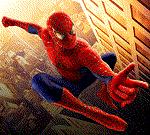
The result was The Fantastic Four #1 (Nov. 1961) by Lee, penciler and co-plotter Kirby — the only credit signatures — with George Klein the generally recognized, uncredited inker The new book did not look like a superhero comic; the new characters appeared on the cover without costumes, and fighting a giant monster as was in vogue in Marvel's pre-superhero comics at the time. Moreover, they had no secret identities, and squabbled and grumbled more like real-life people than traditional superheroes.
These first issues of the risky, groundbreaking book set the template for the "Marvel revolution" that revitalized the comics industry with a rough-hewn naturalism in which superheroes could bicker, worry about finances, and be flawed human beings, unlike the golden, square-jawed archetypes that had become the tradition. Lee's intended swan song became unexpectedly and phenomenally successful; Lee and Kirby stayed together on the book and began launching other titles from which the vaunted "Marvel Universe" of additional interrelated titles and characters grew.
Through its creators' lengthy run, the series produced many acclaimed stories and characters that have become central to Marvel, including Doctor Doom; the Silver Surfer; Galactus; the Watcher; The Inhumans; the Black Panther; the rival alien Kree and Skrull races; and Him, who would become Adam Warlock. As well, the duo of Lee & Kirby, who eventually shared credit as co-plotting collaborators, introduced such concepts as the Negative Zone and unstable molecules, two core elements of the Marvel mythos. In the book's most groundbreaking yet utterly natural development, Fantastic Four presented superhero comics' first pregnancy, culminating with the birth of a Marvel superhero family's first child, Franklin Benjamin Richards. The pregnancy was announced in Fantastic Four Annual #5, and the baby was born one year later in Fantastic Four Annual #6 (1968). (DC Comics' Aquaman had previously fathered a child in his own series, issue #23.)
After Kirby's departure from Marvel in 1970, Fantastic Four continued with Lee, Roy Thomas, Gerry Conway, and Marv Wolfman as its consecutive regular writers, working with artists including John Romita, Sr., John Buscema, Rich Buckler, and George Perez, with longtime inker Joe Sinnott helping to provide some visual continuity. Jim Steranko contributed a handful of covers.

No comments:
Post a Comment